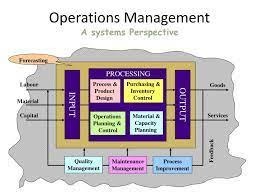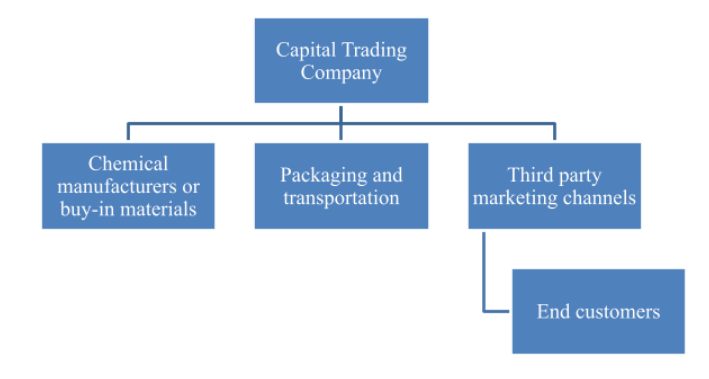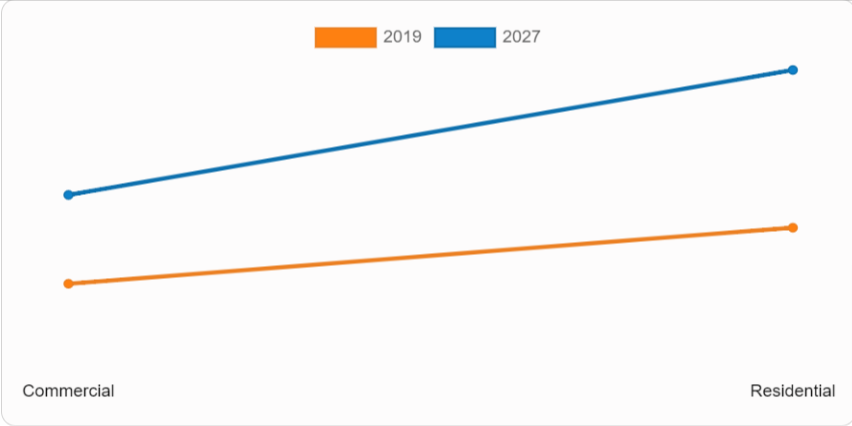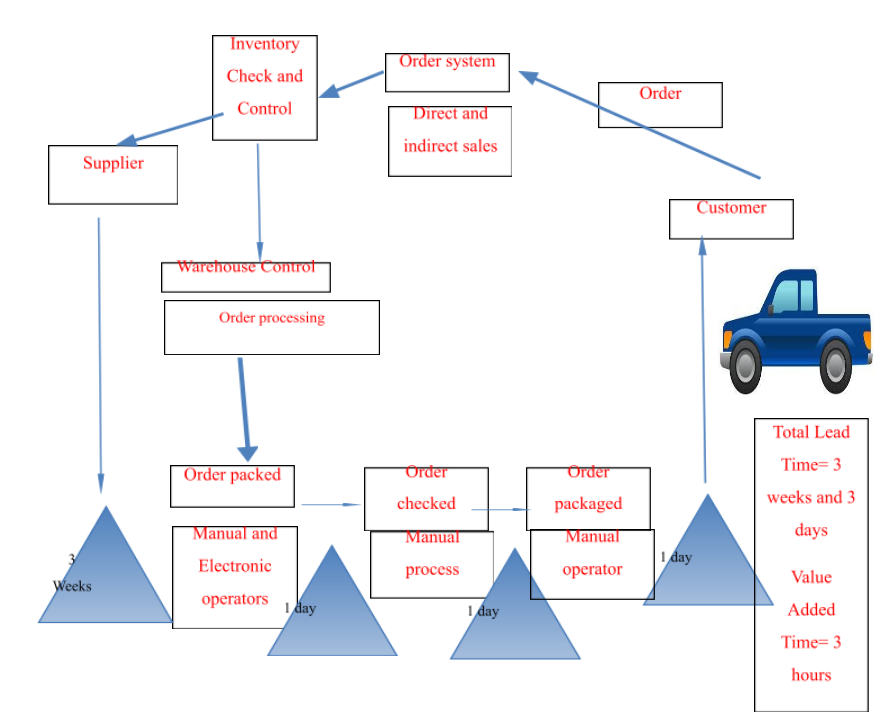Logistics Management Assignment: Case Analysis of Capital Trading Company
Question
Task
Logistics Management Assignment Task: Different manufacturing processes have different strengths and weaknesses as some are best suited to making small numbers of customized products, while others excel at producing large volumes of standard item. Companies must therefore carefully consider the strengths and weaknesses of different processes and make appropriate decisions as part of their overall business strategy not just in relation to the right equipment but also to include people, facilities and physical layouts as well as information systems (Bozarth and Handfield, p. 55). Consequently, an ideal manufacturing system must be flexible and yet efficient, with low unit production costs.
Based on the above, you are asked to take as an example a product or a service from an industry that you are familiar with (e.g., food, technology, healthcare, retail, services, automotive), and critically:
- Examine the current process design of that product or service in alliance with the 4 Vs model and illustrate the operational process by using either a Flow Chart or Value Stream Map technique.
- Discuss how implementation of Lean Principles and Just -in- Time (JIT) manufacturing may assist in achieving a more flexible and yet efficient process design. Justify your answer by referring to the 5 Performances model.
Answer
Executive Summary
As stated in the logistics management assignment, the role and significance of operational excellence are important to consider for every business in order to attain competitive advantage as well as to fulfill the needs of customers and market trends. Likewise, the Capital Trading Company has been efficient and effective in its current process design within the liquid soap and powder industry in order to cater to the wider marketplace of Cameroon. The company’s products range is extensive and in this report, the focus on the operational process in terms of liquid soap and powder has been considered. After in-depth analysis and significant use of manufacturing theories and models, it has been identified that the operational process at present of the company is efficient in terms of the 4Vs model which are visibility, volume, variation, and variety. However, it is essential for the organization to increase its visibility by adopting technological advancements and the need to implement Lean Principles and Just -in- Time (JIT) manufacturing processes for accomplishing more flexibility and efficiency which has been elaborately discussed in this report.
Introduction
An ideal manufacturing system reflects flexibility and efficiency in terms of low unit production costs, aligning the right equipment, physical layouts, people, information systems, and facilities with the overall business strategy. As a result, the weaknesses within the manufacturing processes can be well mitigated with its potential strengths that in turn lead to global success and competitiveness. On the other hand, operations management has become one of the most important business aspects for every organisation as this business function is responsible for managing the process of creation of goods and services through effective planning, organising, coordination, and controlling. Within the context of operation management, the processes are responsible for transforming inputs to outputs whereas layout for operations flow is the arrangement of methods, people, material, and equipment to generate products in terms of the process based on a continuous flow. Based on such context, a detailed analysis of the current process design and operational process of the Capital Trading Company within the industry of powder and liquid soap precisely in Cameroon, South Africa is done. In addition, by analysing their current process design, the implementation of Lean Principles and Just -in- Time (JIT) manufacturing has been further recommended to the company for accomplishing a more flexible and yet efficient process design while employing relevant theories and models.
Discussion
Current process design
The manufacturing process of the powder and liquid soap
As put forward by Ly et al. (2017), there are five significant types of manufacturing and production process including project, continuous, jobbing, line, and batch which highly depends on the supply of raw materials, type of product being manufactured as well as the demand of the product in the marketplace. In addition, there is a sixth type as well which is a hybrid structure of the other types or the mixture of two or more types. Likewise, the manufacturing process of the powder and liquid soap at the Capital Trading Company entails a hybrid structure of batch and continuous processes, as per (Capitaltrading-cm.com, 2021). In terms of the typical continuous process, the production is continuous as there is a continuous input of raw materials such as dry and liquid ingredients or stabilizers and there is a continuous output in the form of liquid soap and powder. By using this process, the company fosters a very controlled environment for continuous production where the majority of the work is done by machines.
On the other hand, in terms of the batch process, the company already analyses and comprehends the number of units required in one batch which are highly aligned with variable demands. As there are a large variety of products within the range of power and liquid soap products, it results in variable demands which the company identifies and manufactures the needed or demanded quantity of the product before moving on to the next item in the list. It has been well stated by (Cunha et al. 2017), batch production is a method where a group of identical products is manufactured simultaneously. Hence, by using batch and continuous manufacturing processes, the Capital Trading Company has been able to reduce waste, and employee downtime while increasing cost-effectiveness and multiple-use capabilities of the processes.
Buy-in and in-house materials
As indicated by Zhang et al. (2017), in order to successfully implement a manufacturing or production process, the need to analyse the buy-in and in-house materials are highly required for eliminating quality issues and production issues. Likewise, the Capital Trading Company capitalises its in-house materials for the production of its powder and liquid soap. However, there are certain raw materials that are procured by the company from local suppliers in Cameroon which assist the company to successfully manufacture the products in terms of the market demands while maintaining quality and efficiency in the processes, (Capitaltrading-cm.com, 2021).
|
Buy-in materials |
In-house materials |
|
Oils and fats |
Sodium carbonates |
|
Potash lye or soda lye |
Perfumes |
|
Brine |
Sodium silicate |
|
Acid slurry |
Dyes |
|
Soda ash |
|
|
Soapstone |
|
|
Water |
The process to convert input into outputs in terms of systems view
As the entire process is based on machinery, once the production starts, only the raw materials are added and the machines convert them into finalised products. The basic process to convert inputs into outputs in terms of the systems perspective is as follows:

Fig: 1 (Operation management- Systems perspective)
Source: (Theintactone, 2018)
Forecasting and Inventory Management: In this stage, the amount or production unit is well analysed by the Capital Trading Company which is well evaluated through market demands, needs, and availability of raw materials. At first, the batch production is put forward for the products, and later by analysing the inventory in terms of raw materials, labours, and capital, continuous production is implemented.
Inputs: In this stage, the powder and liquid soap premix manufacture are procured from local suppliers in Cameroon and very minimal human resources are utilised as the entire process is based on machinery. A combination of synthetic surfactants and soap are integrated as the first premix after which the other ingredients are mixed which in turn neutralises fatty acids, (Showell, 2017).
Processing: In this stage, all the ingredients are added and mixed at high temperature and later the enzymes are added in powder form which is the last stage of manufacturing. During this process, the process and product design are already established and the raw materials are already procured and the inventory is well managed by the company, (Vorster, 2017). In addition, the material capacity and market demands are well evaluated through effective planning, control, and maintenance along with quality management for enhancing the quality of the product.
Output: After the entire process is completed, a quality check is performed for analysing the quality of the products attained. After the final check, the product is sent for packaging and then the powder and liquid soap are distributed through various marketing channels and end consumers, (Capeci and Welch, 2017).
Supply Chain and Project Management: It has been well suggested by Chupa et al. (2017), the supply chain and project management are a method that enables organisations to coordinate activities and resources for delivering a defined goal within the scope, timeframe, and budget. Based on the above analysis, the below figure suggests the supply chain and project management powder and liquid soap products of the company.

Fig: 2 (Supply Chain and Project Management)
Source: (By the writer)
Chemical manufacturers or buy-in materials: At the Capital Trading Company other than the in-house materials, the other chemicals and needed raw materials for the manufacturing and production processes are procured from local suppliers which are cost-effective and ensure higher quality. The consideration of scope, timeframe and budget are well integrated into the manufacturing and project management process.
Packaging and transportation: After the production process is completed, the entire batch and production units are sent for packaging for delivery to the end consumers. The transportation partners are contacted for distributing the products to relevant marketing channels and distributors.
Third-party marketing channels: The 3rd party vendors and marketing channels cater to the products in the marketplace of Cameroon while maintaining ethical and quality perspectives at an extensive rate, (Témoin?Fardini et al. 2017).
End customers: Lastly, the products are offered to the end customers and post-purchase feedbacks are well evaluated for improving the quality and process of the manufacturing and production.
Four Vs of operations management within the context of Capital Trading Company
As opined by Pinto et al.(2018), organizations that offer the highest quality of products or services are the ones that lure and retain potential customers but the need for ability is essential. Based on ability and eminence, there are four operational processes of operations management including visibility, volume, variation, and variety. These processes assist an organization to create value and sustainability in the marketplace. Based on such context, the following are the four operations processes that are integrated within the Capital Trading Company that reflect its ability and eminence to survive and flourish in the marketplace of Cameroon.
Volume: Before initiating the production process, the company analyses the required quantity or units of the products to be produced as it has a high-volume manufacturing service. It results in a very high degree of consistency in every product and service delivery.
Variety: The Capital Trading Company has varieties within its products range of the liquid soap and powder including Ozil Dishwashing liquid, liquid detergent, cream, and SABA powder detergent which assist the company to increase profits and sales while reducing their dependence on one or two products, (Capitaltrading-cm.com, 2021). Its portfolio includes leading household brands in Cameron and has a product to cater to every segment of the society with potential variety.
Variation: As per Alliedmarketresearch.com (2021), the liquid soap and powder market is expected to reach $38,191.9 million by 2027 which reflects growth in CAGR of 9.30% from the business year 2021 to 2027, specifically after the covid-19 crisis. This means that the level of demand is projected to rise in the forthcoming years which the Capital Trading Company has easily predicted in terms of variation to collectively manage. As there is a precise pattern within this industry, the company is capitalizing on such variations to enhance quality in both the production and transactional processes.

Fig: 3 (Liquid soap and powder market by application)
Source: (Alliedmarketresearch.com, 2021)
Visibility: In terms of visibility, it has been identified that Capital Trading Company has very limited visibility in the market of Cameroon, specifically at the online platform. It is essential for the company to locate potential customers and engage accordingly as it can result in loyalty and satisfaction issues for customers due to frustrating search issues, (Wang et al. 2018). Hence, it can be stated that the operations management of the Capital Trading Company is responsible for keeping the four Vs integral in terms of high productivity by developing procedures and processes to assist the firm in accomplishing higher variance volume and variety but the need to increase visibility is essential for the company for enhancing its operations management processes.
Value stream map technique of the operational process
Firstly, the operational process initiates when the customer places an order through offline or online mode that is received through the company’s order processing system. Secondly, the order processing system conveys the information to the inventory control system based on which either the production unit initiates with the available inventory in stock for the product or the buy-in materials are procured from the supplier. Thirdly, the inventory system conveys the information to the warehouse for processing, and the upon supplier’s delivery, the raw materials are stocked in the inventory of the warehouse, (Xuand Chen, 2018). Later, based on the demand, the production starts where it is checked for accuracy, packaging, and shipped to the end customers. The below value stream map of the operational process of the Capital Trading Company:


Implementation of Lean Principles in the manufacturing and process design of Capital Trading Company
As put forward by Rydzkowski et al. (2018), lean principles encourage the practice of continuous improvement as well as based on the basic idea of respect for people.
Value: The Capital Trading Company needs to focus on the customer’s definition of value and must increase its visibility by adhering to such needs while manufacturing its products. By offering products that adhere to the value and satisfaction of the customers, the company can create value and gain loyalty in the marketplace of Cameroon.
Value stream: It is essential to carry out an in-depth analysis of the entire value chain or stream system as it is one of the most essential elements of a lean implementation. The company needs to develop its IT infrastructure in compliance with the manufacturing and production system for enhancing operational efficiency and to develop an effective value stream that can ensure competitiveness and success in the market, (Sebtaoui et al. 2020).
Flow: By adopting Lean principles, the company can reduce or eliminate waste and the process flows continuously without any delays which can assist to cater to the wider marketplace. In addition, the company must ensure that the operational process is continuous and doesn’t stop at any point for lean production and to meet market demands.
Pull: The Company needs to work on creating pull from the customers as to when the customer places an actual demand, it is essential for the company to align production and position to ship to the demand of the customer. As a result, delays and shortcomings are avoided during increasing or decreasing demands, according to (García et al. 2019). By adopting such a principle, the Capital Trading Company can reduce time, costs and fulfill the customer’s demand efficiently.
Perfection: The Company must focus on continuous improvement within its operational processes and human resources for perfection. In addition, other than continuous improvement, the need to foster a healthy and motivating environment is essential for accomplishing excellence in operational areas by the company which can be well complemented by the Lean principles.
Justification in terms of 5 performances model
By employing Lean principles within the operational process of the Capital Trading Company, the below table reflects the potential benefits.
|
Quality |
It can be accomplished by satisfying the needs of the customers and creating value which can reduce costs in the long haul as the company can gain satisfied customers. |
|
Speed |
It can be attained as the turnaround time between customers ordering the product and when they receive the product is relatively less compared to the current operational process which takes 3 weeks and 3 days. Lean operations can result in high and fastest delivery of products and services, (De Oliveira et al. 2019). |
|
Dependability |
Lean principles can assist the company to cater the products as required and promised to the customer which results in repeat purchases or new leads. |
|
Flexibility |
It can be achieved through lean principles as it can assist to identify market trends, customer needs, and changes as well as variations which can result in competitiveness for the company. |
|
Cost |
By implementing lean principles, the production costs can be lowered which can assist to cater to the wider market segment in terms of affordability, (Gao, 2018). |
Implementation of Just-in-Time (JIT) technique in the manufacturing and process design of Capital Trading Company
As stated by Pinto et al. (2018), speed to market and costs of production in manufacturing can break or make a business. JIT manufacturing aims at reducing flow times within the production process and also response times to customers and from suppliers. Based on such technique, the Capital Trading Company need can capitalise on the following elements in its manufacturing and production processes:
Continuous improvement: Through this, the company can analyse fundamental problems, detect processing issues, maintain quality control, strive for simplicity, and can carry out preventative maintenance which increases operational efficiency.
Eliminating waste: By capitalising on this element, the company can reduce waste from overproduction, product defects, waiting time, inventory waste, transportation waste, and processing waste, (Phogat and Gupta, 2018).
Set-up reduction time: This can ensure flexibility and enables smaller batches as well which will require multi-process handling for increasing productivity, job satisfaction, and flexibility.
Hygiene and maintenance: It can further assist to maintain healthy organisational culture and workplace maintenance, (Lepadatu and Janoski, 2018). Hence, the JIT manufacturing can assist the Capital Trading Company to strengthen its competitiveness in the marketplace of Cameroon by increasing efficiency of production, reducing wastes as well as enhancing product quality at an optimum level.
Justification in terms of 5 performances model
By employing JIT manufacturing within the operational process of the Capital Trading Company, the below table reflects the potential benefits.
|
Quality |
This system assists to detect defects at prior stages which results in a minimal number of defects per batch which in turn can result in positive feedback and efficient customer service, (Kumar and Vaishya, 2018). |
|
Speed |
This system can assist to manage suppliers in terms of speed from placing the order to receive the shipment that leads to the accomplishment of performance objectives. |
|
Dependability |
It can significantly assist the company to adhere to the commitment with the customers in terms of quality, time and accuracy, (Shah and Patel, 2018). |
|
Flexibility |
It will enable the company to adapt to the customer’s order in second, despite the present covid-19 crisis. |
|
Cost |
This system can assist to accomplish the performance objectives of the business by lowering the direct and indirect cost of production and offers competitive and lower pricing. |
Conclusion
In conclusion, it can be stated that the current process design of the liquid soap and powder products within this particular industry has been efficient within the context of the Capital Trading Company. The 4Vs model of the operational process suggests effective compliance and adaption of relevant techniques to ensure competitiveness, premium quality, and effective production, manufacturing, and distribution systems. However, in order to maximize visibility, it is essential for the company to use a digital platform for attracting potential customers in Cameroon. In addition, a strong alignment is required to strengthen the operational process of the company which can be accomplished by the successful implementation of the Just-in-Time and Lean Principles technique as only the batching and continuous manufacturing process cannot offer overall competencies and capabilities.
References
Alliedmarketresearch.com. 2021. Liquid Soap Market Size, Share & Trends | Analysis Forecast by 2027. [online] Available at:
Capeci, S. and Welch, R.G., 2017. Compact powdered detergent process technologies. In Powdered detergents (pp. 21-42). Routledge.
Capitaltrading-cm.com. 2021. Capital Trading Company. [online] Available at:
Chupa, J., Misner, S., Sachdev, A., Wisniewski, P., Smith, G.A. and Heffner, R., 2017. Soap, fatty acids, and synthetic detergents. In Handbook of Industrial Chemistry and Biotechnology (pp. 979-1032). Springer, Cham.
Cunha, E.A., Vargas, J.A., de Morais, L.O. and Garcia, P.G., 2017. Evaluation of Extrinsic Contamination of Liquid Soap Used for Handwashing in a Philanthropic Hospital. Rev Bras Cien Med Saúde, 6(6), pp.1-5.
De Oliveira, R.I., Sousa, S.O. and De Campos, F.C., 2019. Lean manufacturing implementation: bibliometric analysis 2007–2018. The International Journal of Advanced Manufacturing Technology, 101(1), pp.979-988.
Gao, X., 2018. Corporate cash hoarding: The role of just-in-time adoption. Management Science, 64(10), pp.4858-4876.
García-Alcaraz, J.L., Realyvasquez-Vargas, A., García-Alcaraz, P., Pérez de la Parte, M., Blanco Fernández, J. and Jimenez Macias, E., 2019. Effects of Human Factors and Lean Techniques on Just in Time Benefits. Sustainability, 11(7), p.1864.
Kumar, M. and Vaishya, R., 2018. Real-time monitoring system to lean manufacturing. Procedia Manufacturing, 20, pp.135-140.
Lepadatu, D. and Janoski, T., 2018. Just-in-time workforce? Temporary workers as a structural aspect of lean production in the US auto industry. International Journal of Automotive Technology and Management, 18(2), pp.160-177.
Ly, S., Rubenchik, A.M., Khairallah, S.A., Guss, G. and Matthews, M.J., 2017. Metal vapor micro-jet controls material redistribution in laser powder bed fusion additive manufacturing. Scientific reports, 7(1), pp.1-12.
Phogat, S. and Gupta, A.K., 2018. Development of framework for just-in-time implementation in maintenance: An ISM-MICMAC approach. Journal of Quality in Maintenance Engineering.
Pinto, J.L.Q., Matias, J.C.O., Pimentel, C., Azevedo, S.G. and Govindan, K., 2018. Introduction to lean and just-in-time manufacturing. In Just in time factory (pp. 1-4). Springer, Cham.
Pinto, J.L.Q., Matias, J.C.O., Pimentel, C., Azevedo, S.G. and Govindan, K., 2018. Just in Time. In Just in Time Factory (pp. 25-38). Springer, Cham.
Rydzkowski, T., Michalska-Po?oga, I., Szczepanek, M. and Kendra, M., 2018. Lean Management–System Assumptions and Barriers to Implementation. New Trends in Production Engineering, 1(1), pp.623-629.
Sebtaoui, F.E., Adri, A., Rifai, S. and Sahaf, K., 2020. How will the risk management impact the success of just-in-time implementation?. Journal of Industrial and Production Engineering, 37(7), pp.333-344.
Shah, D. and Patel, P., 2018. Productivity improvement by implementing lean manufacturing tools in manufacturing industry. Logistics management assignment International Research Journal of Engineering and Technology, 5(3), pp.3-7. Showell, M.S., 2017. Powdered detergents (pp. 1-19). Routledge.
Témoin?Fardini, S., Servant, J. and Sellam, S., 2017. New test method for the evaluation of the preservation efficacy of soaps at very alkaline pH made by saponification. International journal of cosmetic science, 39(5), pp.476-485.
Theintactone. 2018. Systems Perspectives of Operations Management. [online] Available at:
Vorster, A., 2017. A vital link in SA’s manufacturing chain. South African Pharmaceutical and Cosmetic Review, 44(10), pp.28-33.
Wang, D., Chen, Y. and Chen, D., 2018. Efficiency optimization and simulation to manufacturing and service systems based on manufacturing technology Just-In-Time. Personal and Ubiquitous Computing, 22(5), pp.1061-1073.
Xu, Y. and Chen, M., 2018. An Internet of Things based framework to enhance just-in-time manufacturing. Proceedings of the Institution of Mechanical Engineers, Part B: Journal of Engineering Manufacture, 232(13), pp.2353-2363.
Zhang, L., Fung, K.Y., Zhang, X., Fung, H.K. and Ng, K.M., 2017. An integrated framework for designing formulated products. Computers & Chemical Engineering, 107, pp.61-76.












